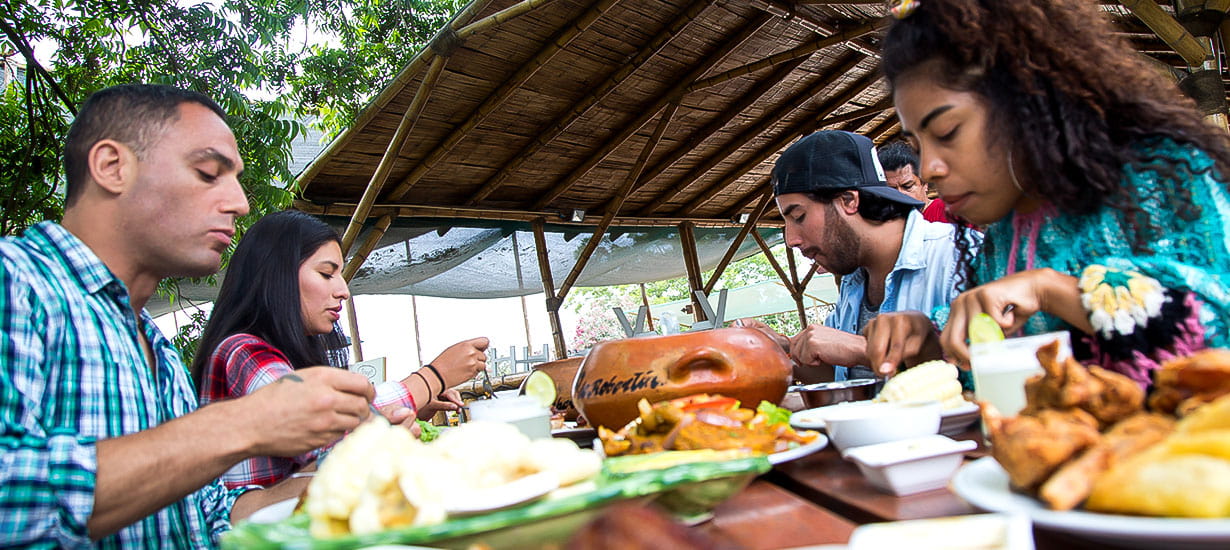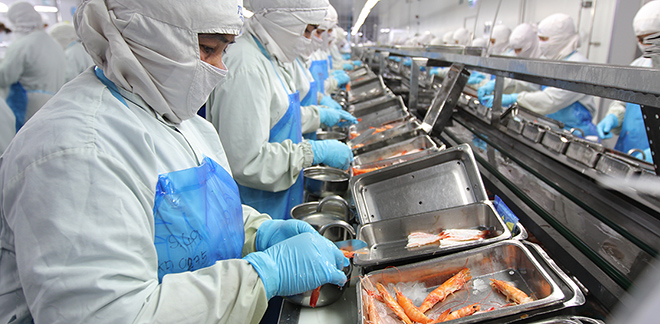5 reasons to invest in Peru's food industry
Síguenos en:Google News
Peru's high-quality raw materials and diverse cuisine present excellent investment opportunities.
The food industry in Peru offers a unique opportunity for investors looking to diversify and strengthen their portfolios. This sector creates approximately 420,000 direct jobs and is projected to generate another nine million jobs—more than 50 % of the economically active population (EAP)—by 2022, according to the Ministry of Economy and Finance (MEF).
Here are five reasons to consider investing in this dynamic and expanding industry.
 Photograph: Alex Bryce / PROMPERU
Photograph: Alex Bryce / PROMPERU
1. World-class culinary diversity
Peruvian cuisine is celebrated worldwide for its variety and deliciousness. From the famous Cebiche to the spicy rocoto relleno, each dish is a celebration of fresh ingredients and bold flavors that reflect the country's richness and cultural diversity.
These not only draw tourists eager for authentic culinary experiences but also strengthens a thriving domestic market. Investing in the Peruvian food industry places you in a market where demand for local products is consistently on the rise.
 Photograph: Alex Bryce / PROMPERU
Photograph: Alex Bryce / PROMPERU
2. World-class raw materials
Peru's exceptional geography blesses it with a diverse range of top-notch agricultural and marine products, which enable us to provide the world with these well-known resources. Whether it is quinoa from the Andes or fresh fish and seafood from the Grau Sea, Peru's superfoods are cherished for their quality, taste, and unique nutritional benefits.
Moreover, the country is embracing sustainable agricultural practices. This approach not only guarantees the quality of products but also meets the increasing global demand for responsibly sourced food.
3. Growing international market
Peruvian cuisine has become increasingly popular worldwide, thanks to celebrated chefs and the rise of Peruvian restaurants in major cities across the globe.
This trend has sparked a rise in the export of Peruvian food products, ranging from traditional superfoods like maca and chia to gourmet items such as specialty coffee and cocoa. Investing in Peru's food industry provides an opportunity to enter this expanding international market and broaden your business prospects.
 Photograph: Alex Bryce / PROMPERU
Photograph: Alex Bryce / PROMPERU
4. Innovation and entrepreneurship are flourishing
The food industry in Peru is always changing and adjusting to global trends. Young entrepreneurs are creating new products and culinary ideas that blend traditional elements with modern twists. This approach is attracting not only local customers but also international markets that have high expectations. Getting involved in this lively industry means joining a wave of innovation and creativity that aims to set new benchmarks in global gastronomy.
5. A strong agricultural sector
The Peruvian economy saw significant growth in its gross domestic product (GDP). According to the National Institute of Statistics and Informatics (INEI), GDP increased by 5.3 % by April 2024, marking the highest growth since September 2021. This growth is largely due to the recovery of sectors like fishing, manufacturing, and agriculture, with agriculture contributing the most to this progress.
In April, the sector's production increased by 23.7 %, thanks to a 36 % growth in the agricultural sub-sector. Key inputs like quinoa, barley grain, and beans grew by over 100 %, while potatoes and alfalfa saw increases of 73.2 % and 25.8 %, respectively.
Success stories:
In Peru, investing in Pollo a la brasa (chicken roasted over charcoal, wood, or gas on a rotisserie) restaurants stands out as a highly reliable choice. A report from Gestion reveals that just 1 % of the 600 new Pollo a la brasa restaurants each year end up closing, making it the business with the lowest failure rate, even during the pandemic.
Many people are seeking to invest in profitable businesses to secure their financial futures in 2024. Among the top ten most lucrative options, gastronomy-related ventures stand out. Within this sector, Pollo a la brasa restaurants are notably successful because of their high demand and low closure rates.
Success in food retailing depends on effective management, a loyal customer base, and finding the right balance between quality and costs.
Chifas (Chinese-Peruvian cuisine restaurants) are another popular type of restaurant in Peru, are also highly profitable, often achieving monthly sales of up to PEN 78,000. They can start as dark kitchens, which reduces the requirement for a substantial initial investment in physical space or large amounts of capital.
 Photograph: Jose Cáceres / PROMPERU
Photograph: Jose Cáceres / PROMPERU
Invest in the future
The Peruvian food industry shows promise not just in its history and current state, but also in its future prospects. With a stable economy, increasing demand, and a strong emphasis on quality and variety, Peru is becoming an appealing destination for investors looking towards the long term.








